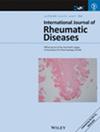Fourteen-Year Retrospective Cohort Study on the Impact of Climatic Factors on Chronic Musculoskeletal Pain: A Spanish Primary Care Analysis
Abstract
Introduction
Chronic musculoskeletal pain, often affected by environmental factors such as temperature, humidity, and atmospheric pressure, can influence pain perception and increase the number of healthcare visits.
Objective
This study examined the link between climate variables and referral rates for chronic musculoskeletal pain in Spanish primary care over 14 years and evaluated the impact of climatic factors on rehabilitation referrals based on variations in pain type, age, and sex.
Methods
A retrospective cohort of 44 212 adults diagnosed with chronic musculoskeletal pain (2010–2023) across three primary care centers was analyzed. The inclusion criteria were CIAP2 (International Classification of Primary Care, second edition) diagnostic codes, with ethical clearance from the Puerta de Hierro Majadahonda Hospital (PI 70/24). This study adhered to Strengthening the Reporting of Observational Studies in Epidemiology (STROBE) guidelines for observational reporting. Climatic data, including temperature, precipitation, wind speed, hours of sunlight, and barometric pressure, were obtained from (Agencia Estatal de Meteorología). Statistical analyses used ARIMAX (AutoRegressive Integrated Moving Average with eXternal regressors) and ETSX (Exponential Smoothing State Space Model with eXternal regressors) models, optimizing model fit through root mean squared error (RMSE), mean absolute percentage error (MAPE), and mean absolute scaled error (MASE).
Results
Significant associations were found between climate factors and referral rates. Higher minimum temperatures reduced shoulder/arm pain referrals by −0.019 (95% CI: −0.036, −0.002; p < 0.05). Male patients were more likely to consult, with age being inversely linked to thoracic/lumbar pain (−0.044; 95% CI: −0.071, −0.018; p < 0.05) and positively associated with shoulder/arm pain (0.038; 95% CI: 0.024, 0.052; p < 0.05). ARIMAX was optimal for most pain types, except for cervical pain, for which ETSX was better.
Conclusions
Climatic factors, such as temperature and pressure, affect referral patterns, highlighting the need for climate-sensitive healthcare planning to aid resource management and patient guidance on pain in varying weather conditions.

 求助内容:
求助内容: 应助结果提醒方式:
应助结果提醒方式:


